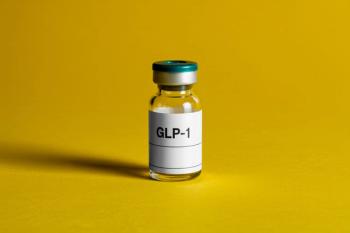
- Psychiatric Times Vol 26 No 7
- Volume 26
- Issue 7
Inside the DSM-V Process: Issues, Debates, and Reflections
Being a member of 1 of the 13 working groups of the DSM-V Task Force is, indeed, a unique experience. Having a large number of respected colleagues working diligently on areas that they have mastered with indisputable authority over the years is an intellectually fascinating experience.
Being a member of 1 of the 13 working groups of the DSM-V Task Force is, indeed, a unique experience. Having a large number of respected colleagues working diligently on areas that they have mastered with indisputable authority over the years is an intellectually fascinating experience. Exploring ways to update and improve an instrument that for many has been a “necessary evil” allows one to examine the latest evidence-based contributions and weigh the pros and cons of novel ideas. Getting involved in discussions in which passion is the common denominator of rigid thinking and/or wise reflections adds to the excitement. Being able to write about this without fear of violating any agreement-because the topics of this commentary are all in the “public domain”-is a rare pleasure away from routines, recessions, and similar occurrences.
Chronological developments
DSM-V work actually started in 1999, only 5 years after the publication of DSM-IV and 2 years before DSM-IV-TR. Working papers requested by the American Psychiatric Association (APA) were discussed in a conference and later published as a book in 2002.1 In those documents, there is plenty of information about deficiencies; recommendations; guiding ideas; goals; advantages and disadvantages of changes; and addition of specific areas (not included in previous versions of the manual), such as culture, gender, dual diagnosis, and mental health disability. At least 4 additional books, with similar purposes, were published in the following years.2-5 The formation of work and study groups took place in 2007 through 2008; that is, 8 to 9 years after the review process began. Ultimately, if DSM-V is published in 2012, the review process will have taken a total of 13 years. There were only 5 years between the first revision paper of DSM-III and the actual publication of DSM-IV.6
In 2002, a series of 12 international conferences began, all of them duly publicized and massively attended. In addition to the well-known APA Web site devoted to DSM-V issues, the American Journal of Psychiatry has published a series of editorials about different aspects, deficiencies, omissions, and needs of the new system. To say that these materials “provide absolutely no information about the plans for the DSM-V process itself” is certainly exaggerated.7
Guiding principles
Throughout this phase of the development process, a number of issues have been discussed publicly, and they indeed can be considered as guiding principles for the forthcoming version of DSM. For instance, it is clear that the dimensional approach will have a much more prominent role in the description of the disorders to be included in DSM-V. The deficiencies of the categorical approach have been well known for years.8 Much attention to “evidence-based” literature is being paid-an improvement over the “data-oriented people” used for DSM-III.9 The participation of different mental health professionals, researchers, clinicians, advocates, and international colleagues, as well as the demographics of the DSM-V Task Force, are interesting exercises in diversity.10 Nobody is saying that these areas have been optimally served in the process, but it certainly appears to be much more open than in previous cases.
The appointment of the task force and work group members demanded the submission of income tax records and other documentation from a number of years. For some, these seemingly exaggerated demands were designed to placate the criticism toward members of DSM-III, DSM-IV, and by then potential members of DSM-V committees for their relationships with the pharmaceutical industry and other financial interests. The famous “confidentiality agreement” has, in fact, been more of a formal document. To avoid a plethora of consultants by having them consulting on specific issues is not necessarily oppressive; on the contrary, once free of their commitment, these consultants could offer their views and perspectives on the process.
Debates and discussions
There has been plenty of information and discussion about possible additions, deletions, changes, training, and other issues. It is clear that there are many diagnoses in DSM-IV that are useless, underused, or even esoteric, so the reduction of the total number of diagnoses in DSM-V would be beneficial for everyone. Even the most militant neuroscientists now agree that an etiology-based nomenclature (ie, biomarkers) is out of reach for DSM-V. Literature reviews, secondary data analyses, and field trials are all steps in different phases of implementation that have been duly publicized and discussed. Drs David Kupfer and Darrel Regier, among others, have presented the topic in grand rounds; have reported at national and international meetings, workshops, and symposia; and have been subjects of newspaper articles.
Not only the leadership of the DSM-V Task Force but also a number of members of the work and study groups (myself included) have felt quite at ease in discussing pertinent aspects of our debates, trends, actual work, and progress made in the past few years. Our colleagues have shown a variable degree of interest, but there is no question that the diagnostic process of psychiatry in general, and the development of DSM-V in particular, are and will be powerful topics of attention in the next several years. The events I have had the opportunity to attend have allowed open and frank discussions about different issues in the process. No particular restrictions are possible or doable even if there is a zealous policing of the lecturers-which there isn’t. I personally have not felt restricted to let my opinions be known in several venues.
Transparency
To say that the APA is resistant to making DSM-V more transparent is pure hyperbole.7 The respected leader of the “DSM-III Revolution” is right when saying that rhetoric “prevents open debate about the directions that the DSM Task Force is taking.”7 But this does not seem to be coming necessarily from the Task Force. In fact, it would be much more beneficial if the critics of the DSM-V process offer specific suggestions about specific groups of disorders or clinical conditions in journals and periodicals, on the Internet, and in any other medium. To be sure, a number of them have done so. What we have seen so far shows a determination to change DSM, not on the basis of the industry’s pressures, but on the basis of a well-balanced process of evaluation of current nosological data. The idea is to make DSM-V an open, living document that can be modified or updated as necessary over time or immediately as changes are suggested or proved.
Conclusions
That the process could be better, there is no doubt. From a conceptual perspective, it is important to continue working on a balanced perspective of clinical views and research contributions. As much as we all want to provide solid literature support for the changes, at a recent conference, sponsored by the American Psychopathological Association, the well-known phrase “the absence of evidence is not evidence of absence” resonated profoundly.11,12 Clinical intuition and compassionate rapport in a well-conducted interview can do wonders in the diagnostic process. The continuous use of a phenomenological approach, as advocated in a recent article by Ronald Pies, MD,13 would indeed cover a number of gaps in the information. The honest inclusion of cultural issues and variables, improving the cultural formulation, and including the cultural component in a new definition of mental disorder are crucial areas. The usefulness of the manual for both clinical and research activities; the clinical utility of the document; and the emphasis on normality, risk, and protective factors that include resilience, estimates of comprehensive treatment targets, better links with therapeutic approaches, and assessment of quality of life can and will be definite areas of continuous dialogue.
We should move beyond catastrophizing about a mythical transparency. In spite of the complexity of its job, the DSM-V Task Force and its work and study groups are forging ahead. As a modest but active participant in this process, I feel good about the rather transparent interactions of egos, styles, and personalities devoted to a work that requires knowledge, compassion, and commitment to succeed.
References:
1. Kupfer DJ, First MB, Regier DA, eds. A Research Agenda for DSM-V. Washington, DC: American Psychiatric Association; 2002.
2. Phillips KA, First MB, Pincus HA, eds. Advancing DSM. Dilemmas in Psychiatric Diagnosis. Washington, DC: American Psychiatric Association; 2003.
3. Widiger TA, Simonsen E, Sirovatka PJ, Regier DA, eds. Dimensional Models of Personality Disorders. Refining the Research Agenda for DSM-V. Washington, DC: American Psychiatric Association; 2006.
4. Narrow WE, First MB, Sirovatka PJ, Regier DA, eds. Age and Gender Considerations in Psychiatric Diagnosis. Washington, DC: American Psychiatric Association; 2007.
5. Helzer JE, Kraemer HC, Krueger RF, et al, eds. Dimensional Approaches in Diagnostic Classification. Washington, DC: American Psychiatric Association; 2008.
6. Frances AJ, Widiger TA, Pincus HA. The development of DSM-IV. Arch Gen Psychiatry. 1989;46:373-375.
7. Spitzer RL. DSM-V transparency: fact or rhetoric? Psychiatr Times. 2009;26(3):8.
8. Kraemer HC. DSM categories and dimensions in clinical and research contexts. Int J Methods Psychiatr Res. 2007;16(suppl 1):S8-S15.
9. Spiegel A. The dictionary of disorder: how one
man revolutionized psychiatry. New Yorker. January 3, 2005. http://www.newyorker.com/archive/2005/
01 /03/050103fa_fact. Accessed June 3, 2009.
10. APA names DSM-V Work Group members
[news release]. Arlington, VA: American Psychiatric Association; May 1, 2008.
11. American Psychopathological Association. Evolution of the DSM-V conceptual framework: development, dimension, disability, spectra and gender/culture. Presented at: 99th Annual Meeting of the American Psychopathological Association; March 5-7, 2009; New York.
Articles in this issue
over 16 years ago
Inflammation, Psychosis, and the Brainover 16 years ago
Delirium With Catatonic Features: A New Subtype?over 16 years ago
Helping Children Hospitalized for Ragesover 16 years ago
A Model for Treating Refugees Traumatized by Violenceover 16 years ago
Intense Debate Over Implementation of New Parity Lawover 16 years ago
PTSD Has Unreliable Diagnostic Criteriaover 16 years ago
Stalking: The Veiled Epidemicover 16 years ago
Battered Woman SyndromeNewsletter
Receive trusted psychiatric news, expert analysis, and clinical insights — subscribe today to support your practice and your patients.

















